If you want to outrank your competitors in search results, you first need to understand what they’re doing right. That’s where an SEO competitor analysis comes in. It shows you which keywords they target, how they structure their content, giving you the insights you need to build a stronger SEO plan. In this guide, you’ll discover a reliable method to analyze your SEO competitors and extract insights that can help improve your site’s ranking.
SEO Competitor Analysis: Basic Understanding
SEO Competitor Analysis: Definition
An SEO competitor analysis (also called an SEO competitive analysis) is the process of researching your competitors to gather insights about their keywords, backlinks, content, and using those insights to improve your SEO strategies for the website.
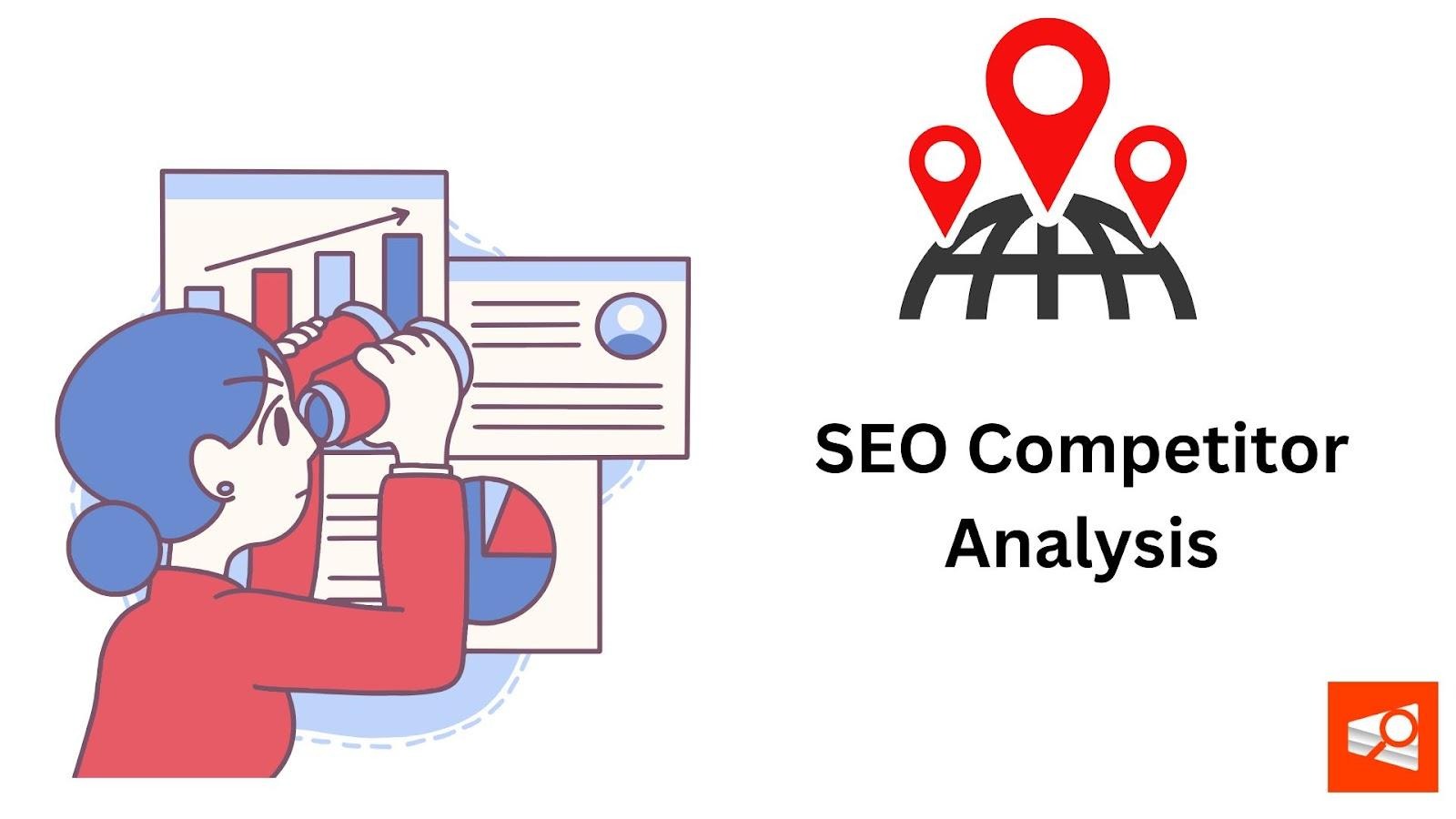
SEO Competitor Analysis: Importance
1. Better visibility in search results
An SEO competitor analysis can greatly help improve visibility online. When you analyze which keywords and strategies drive rankings for competitors during the analysis, you can refine your own approach to target high-value search terms. That approach will give your business the opportunity to appear in front of potential customers at the right moment, increasing traffic and brand awareness without relying solely on trial and error.
2. More efficient use of resources
You will be able to allocate your resources smarter once you conduct the analysis. When businesses have no insights from competitor analysis, they often spend time and money chasing strategies that deliver little return. The analysis will let you know what already works in your industry, so you can focus your budget and efforts on proven tactics instead of guessing. This efficiency not only saves costs but also speeds up the time it takes to see meaningful results from SEO.
3. Stronger competitive advantage
SEO competitor analysis also helps you build a lasting edge over rivals. Understanding their strengths allows you to benchmark your own performance, while spotting their weaknesses creates opportunities for you to step in and do better. Over time, this gives your business a stronger position in search rankings, greater authority in your niche, and a clearer pathway to long-term growth.
The Key Steps of SEO Competitor Analysis You Need to Know
An SEO competitor analysis should be a regular part of your strategy. We recommend performing this process every three to six months to quickly identify market shifts and adapt your approach.
Step 1: Identify Your True SEO Competitors
Before you can analyze, you need to know who you’re up against. Your main competition will be the websites that show up at the top of Google for the keywords you’re aiming for. They provide similar products and are reaching for the same target audience.
Your main competition will be the websites that show up at the top of the first page on Google or other search engines for the keywords you’re aiming for. They provide similar products and services and are reaching for the same target audience.
Conducting research in the SERP – or even better, you can do it manually by searching your targeted keyword on Google and see who your competitors are, and how they implement these keywords. To gain deep insights when conducting research in the SERP, you’ll need a powerful SEO tool. While the Ahrefs vs SEMrush debate is common, both are excellent for this task and can uncover data you’d otherwise miss.
For example, let’s walk through how SEMrush identifies your SEO competitors.
First, click on Domain Overview and type your URL:

And then you can go to the Compare domains section, add your competitor’s domains to start analyzing.
 These competitors are websites that rank for the same keywords and aim for the same audience as you.
These competitors are websites that rank for the same keywords and aim for the same audience as you.
You can explore all your competitors along with additional valuable information. You can also see the number of shared keywords you have with these domains and the traffic they are attracting.

The Top Opportunities section is helpful because it helps you to identify which keyword you are weak compared to other competitors and start optimizing them.
 By the time you finish this step, you should have pinpointed at least 4-5 key organic competitors.
By the time you finish this step, you should have pinpointed at least 4-5 key organic competitors.
Step 2: Examine your competitors’ content and keyword strategy
This is where you analyze what your competitors are doing to attract traffic. Start by examining their blogs, landing pages, and product descriptions to understand which topics resonate in your industry. Note the content formats they prefer-are they using long-form guides, short articles, videos, or infographics?
To go deeper, a critical part of this process is conducting a Keyword Gap Analysis. The “gap” represents keywords your competitors rank for, but you don’t. Uncovering these provides a roadmap of opportunities to expand your search visibility. The goal is to enhance your existing content and create new pages targeting these missing keywords, thereby capturing traffic that is currently going to your rivals. You can use tools like Ahrefs or SEMrush to identify which competitor pages bring in the most traffic and which backlinks support their visibility. This helps you understand not just what they are publishing, but also why it is performing well.
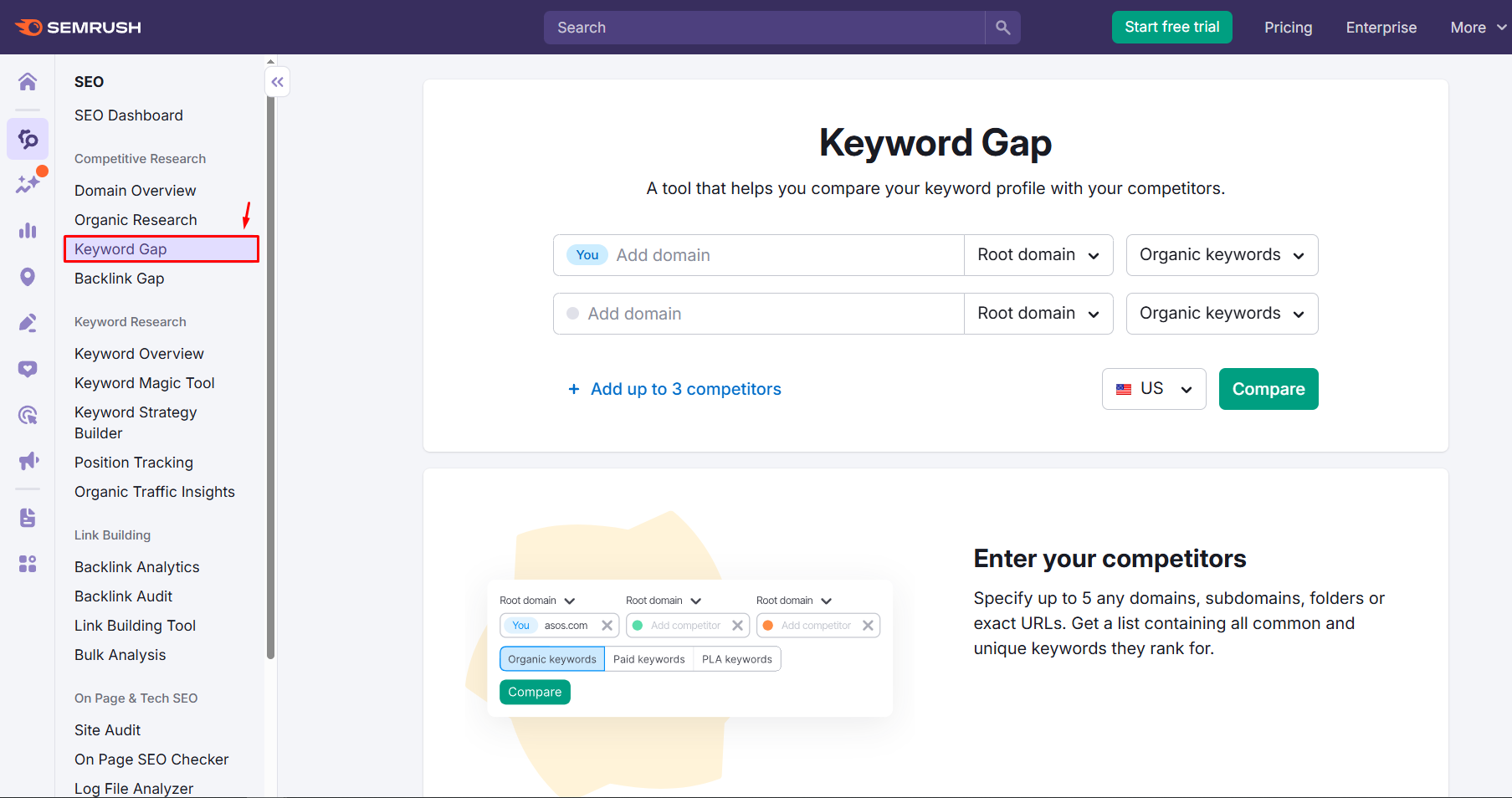
While comprehensive platforms like SEMrush are excellent for deep analysis, Shopify merchants also have the advantage of using integrated apps that work directly within their admin.
With SearchPie, an SEO app built specifically for Shopify, you can not only perform a keyword gap analysis but also identify the competitive status of keywords within a workflow that’s already familiar to you. By identifying these potential keywords, you can then focus on implementing gap analysis more efficiently.

At Keyword Explore, merchants can directly input a keyword or phrase and conduct research to uncover related keywords, search volume, and competitive insights. This is the starting point for understanding your niche and identifying potential keywords that your competitors might be ranking for, which you can then leverage for your own gap analysis.
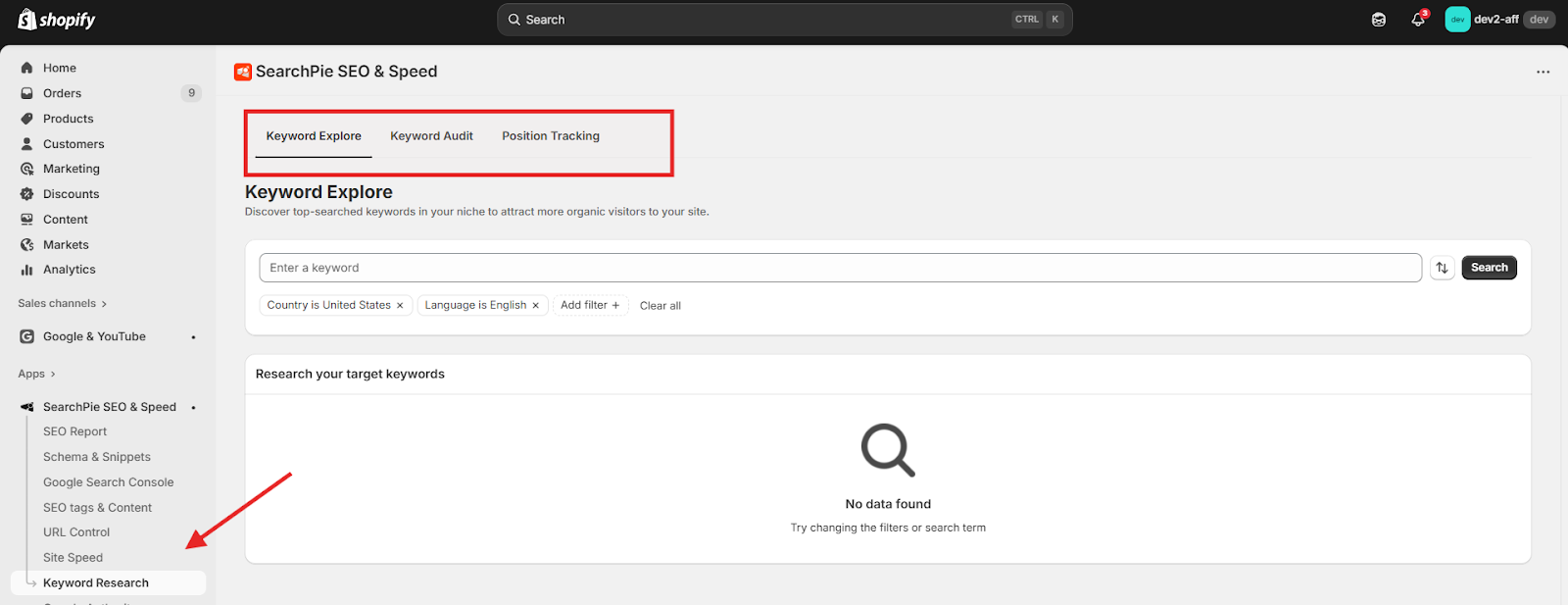
Step 3: Decoding user intent from the SERPs
Once you finish the keyword gap analysis, let’s look at the user intent, the reason behind a search query.
There are four main types of intent that merchants should be aware of:
- Informational intent is when users want answers or explanations.
- Navigational intent happens when they are looking for a specific brand or website.
- Transactional intent shows they are ready to make a purchase.
- Commercial investigation intent comes into play when they are comparing options before buying.
For businesses, recognizing these intents is key to building content that meets user needs:
- Informational searches can be matched with guides, tutorials, or FAQs.
- Navigational queries call for optimized branded pages.
- Transactional searches require strong product pages and calls-to-action.
- Commercial investigation works best with comparison articles, reviews, and case studies.
Once you know the keywords, you need to understand why certain pages rank. This involves assessing user intent-the reason behind a search query. Look at the top results for a target keyword. Are they product pages (transactional intent), blog posts (informational intent), or comparison articles (commercial investigation intent)?
By aligning your content with the dominant user intent on the SERP, you can create pages that better meet user needs, which is a crucial factor for ranking higher and guiding customers more effectively toward conversion.
Step 4: Evaluating their authority through Backlink Analysis
A competitor’s content and keyword strategy is only one part of the equation. Their authority in Google’s eyes is heavily influenced by their backlink profile – the collection of links pointing to their site from other websites. This analysis helps you understand why search engines trust them and provides a proven roadmap for how to build backlinks for ecommerce. Using tools like SEMrush or Ahrefs, you can gain deep insights into your competitors’ link-building strategies. When you analyze their profiles, you should focus on:
- Link Quality and Quantity: Look beyond the total number of links. The number of unique referring domains (individual websites linking to them) is a more important metric. Are these sites reputable and relevant to your industry? A single high-quality link from an authoritative site is worth more than hundreds of low-quality links.
- Common Link Sources (The Backlink Gap): A powerful technique is to identify websites that link to several of your competitors but not to you. Tools like SEMrush’s “Backlink Gap” are perfect for this. These websites are already interested in your niche and represent high-potential link-building opportunities for your own brand.
- Top-Linked Pages: Discover which of your competitors’ pages attract the most backlinks. Is it their in-depth blog posts, original research, free tools, or product category pages? This reveals what type of content earns authority and trust in your industry, giving you a blueprint for creating your own “link-worthy” content.
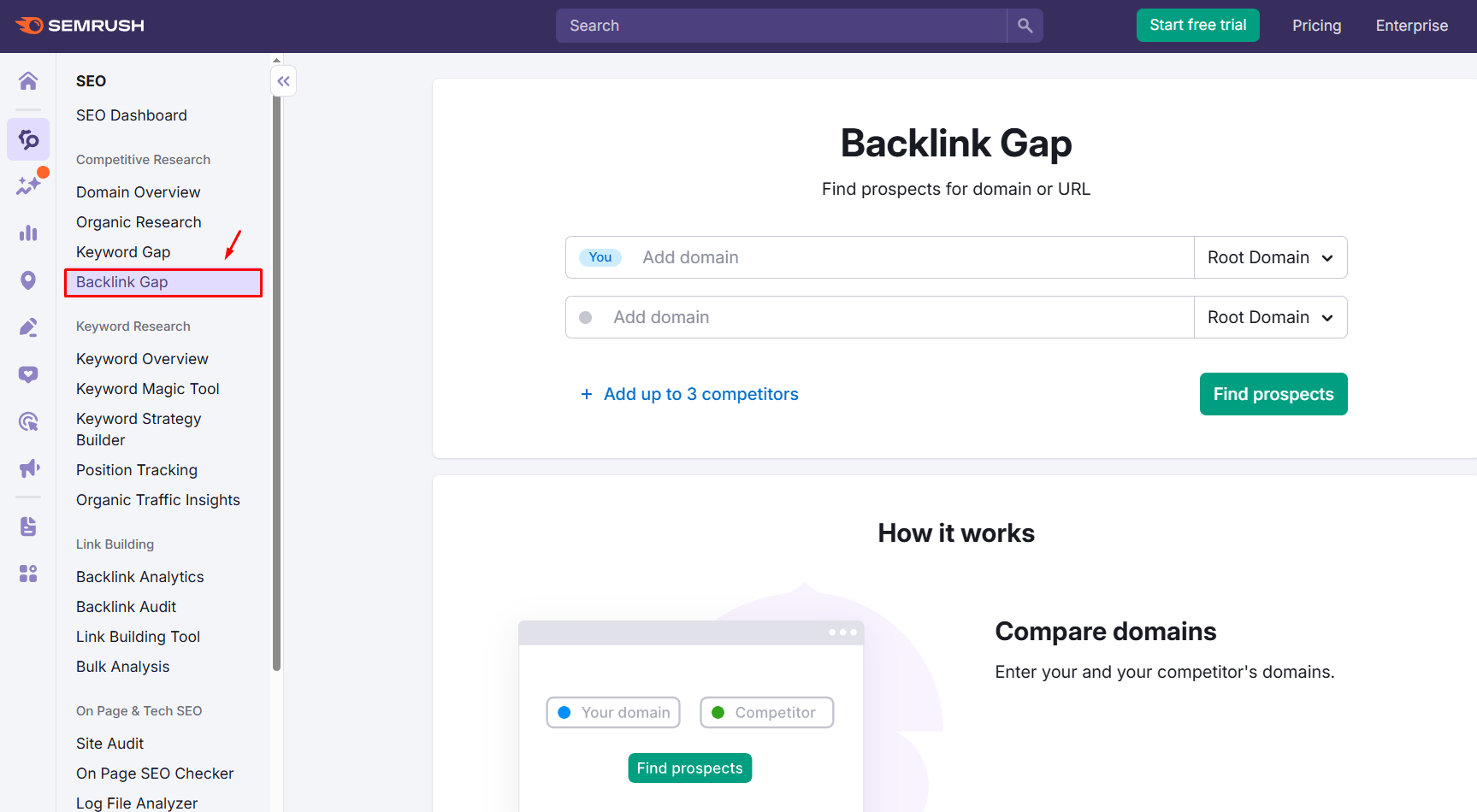
For Shopify merchants specifically, an integrated app like SearchPie offers a convenient way to handle Position Tracking directly within the Shopify admin, helping you control and improve your content’s performance over time.
By Position Tracking, you can optimize related keywords, their search volume, and other competitive insights, serving as the foundational step for a keyword gap analysis. By understanding the landscape, you can more effectively identify the specific keywords your competitors rank for.
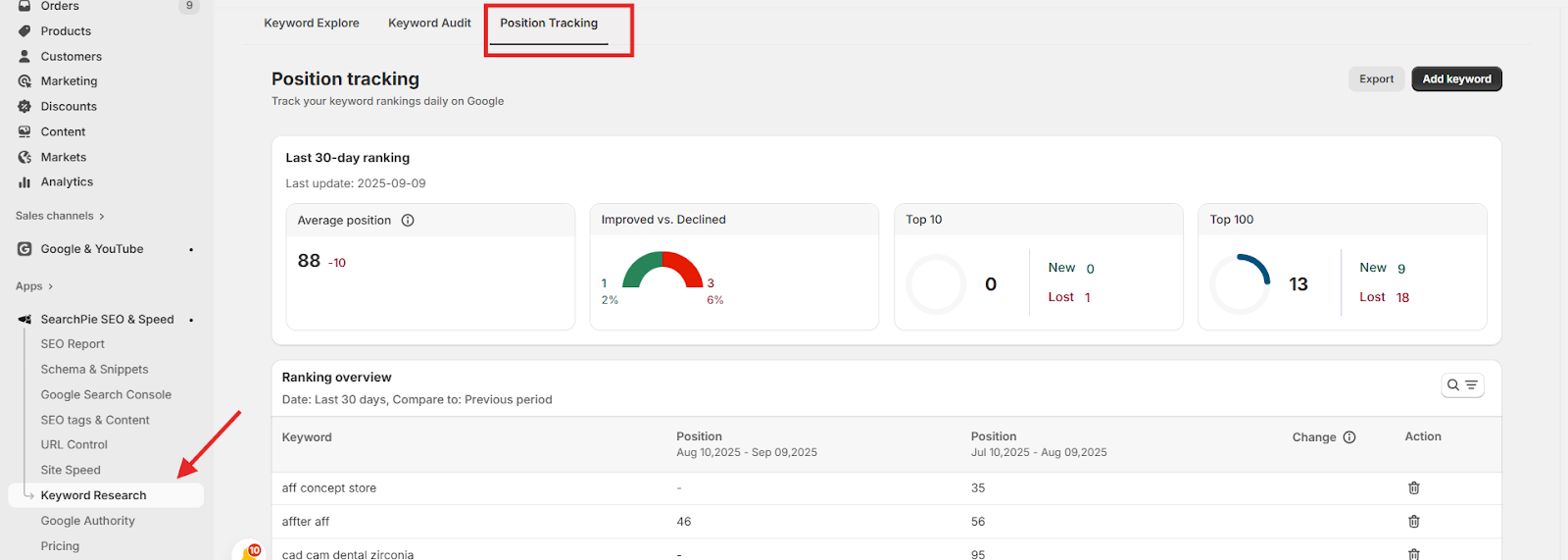
By understanding where your competitors’ authority comes from, you can create a strategic plan to acquire similar (or even better) links, boosting your own site’s authority and positioning yourself for a significant SERP advantage.
Conclusion
SEO success is not a one-time achievement but a continuous cycle of improvement. The techniques in this guide provide a framework for turning competitor insights into actionable strategies for your content, keywords, and backlinks. The digital marketplace is constantly evolving, and the key to staying at the forefront is ongoing learning. The foundation for that learning is a disciplined SEO competitor analysis.


